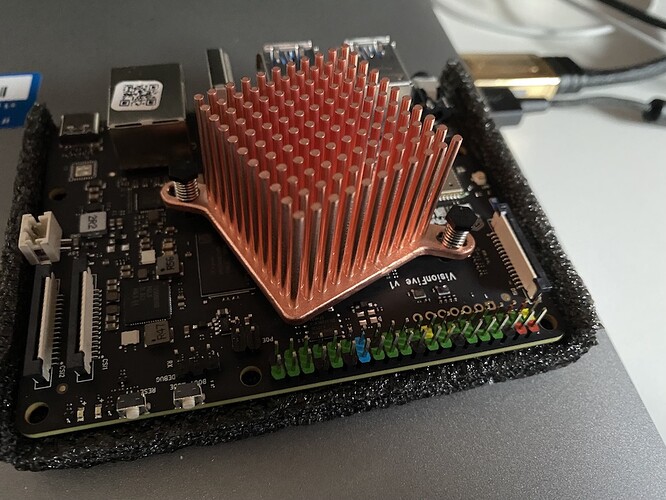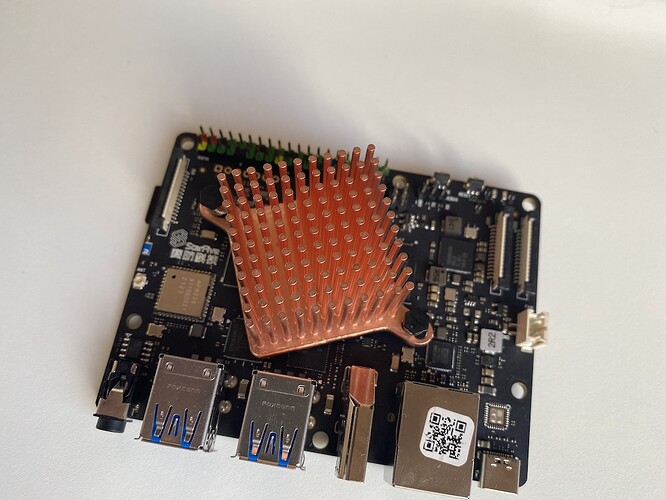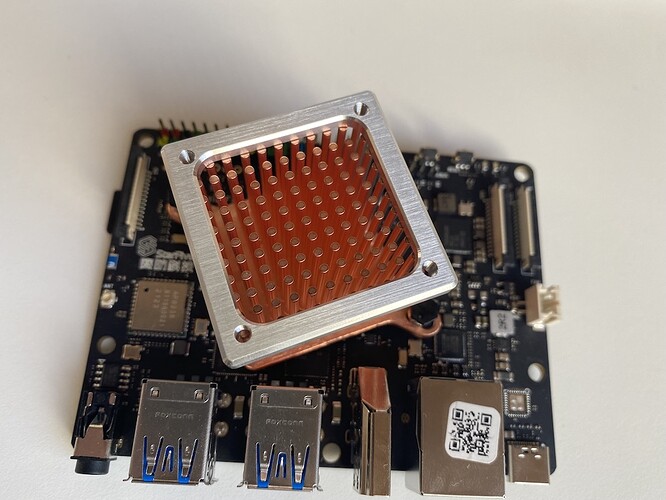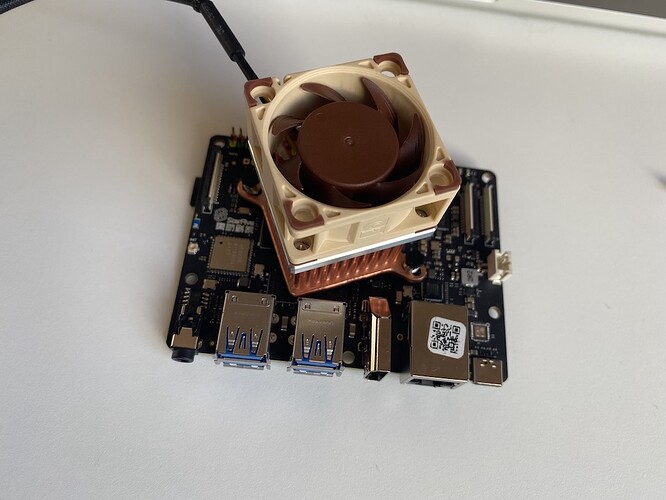I’m currently using an Enzotech CNB-S1 together with a Noctua NF-A4x20 5V running at 3.3V.
As the cooler is a little bit smaller than the fan I bought a custom aluminium fan mount as well as I wasn’t in the mood for 3D-printing ![]()
Temperatures never got higher than 30°C. Idle and load seem to be nearly the same around 27°C to 29°C with an ambient temperature of ~20°C:
$ sensors
124a0000.tmon-isa-0000
Adapter: ISA adapter
temp1: +27.0°C



